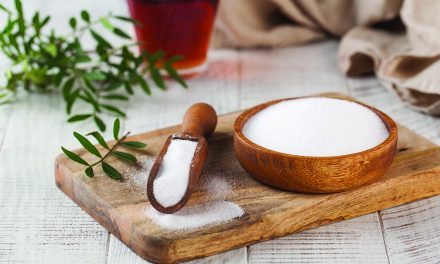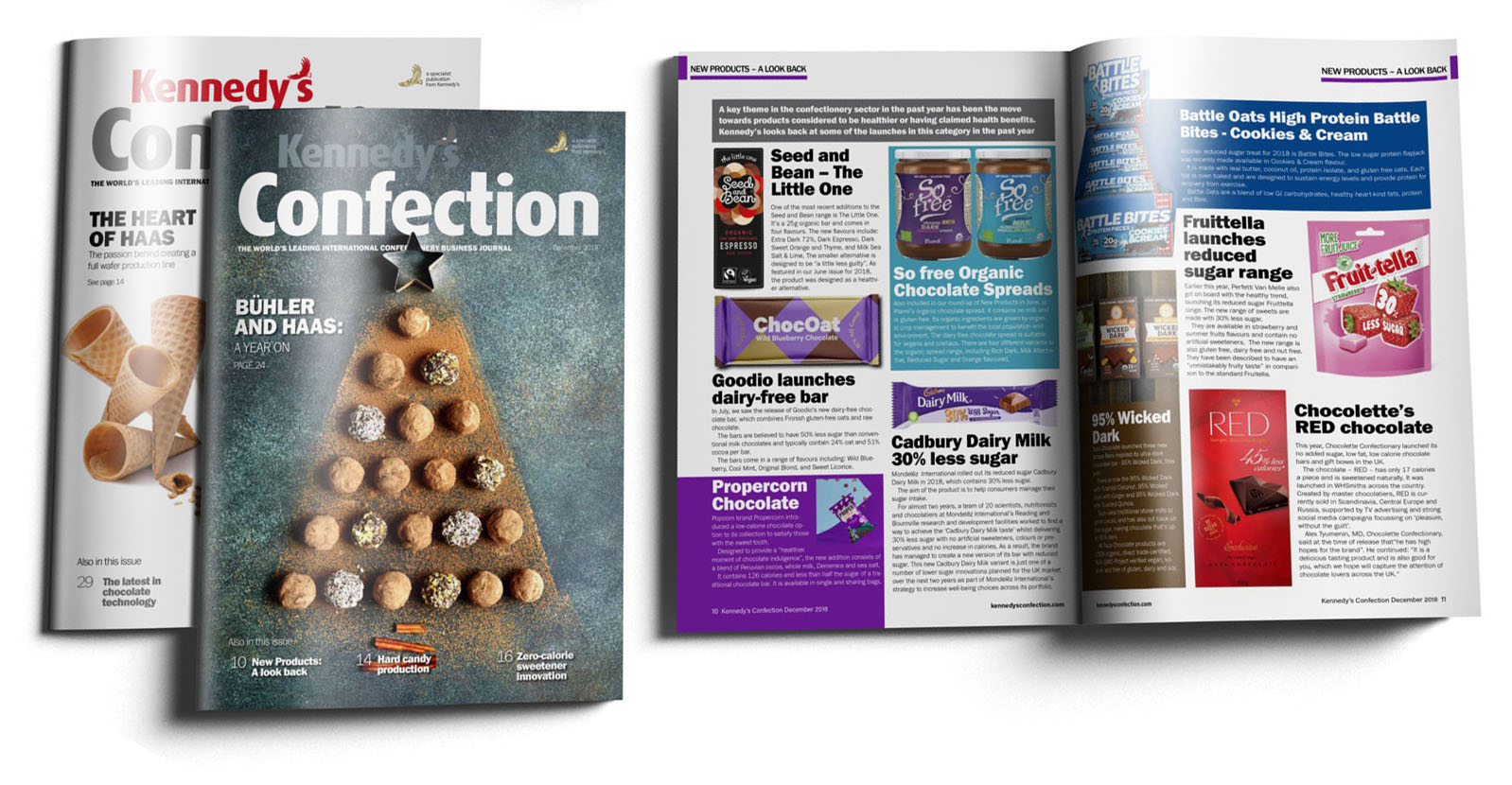Which areas of confectionery are opting for natural ingredients and how can they be incorporated into existing products to satisfy the health-conscious consumer and new food safety regulation? Kiran Grewal reports.
One could argue the words natural ingredients and confectionery just simply don’t go together. Confectionery and chocolate are normally associated with a “naughty” treat, something you allow yourself to have after [insert any excuse in the world here]. So, why has the need for natural ingredients in confectionery arised with such popularity? And how can confectionery manufacturers work to include these new ingredients into their products without hingering taste and texture? Well, consumers have been showing a clear interest in healthier alternatives, and many are looking to have their cake and eat it so to speak, as a few changes in ingredients can make something that is seemingly naughty, become oh so nice.
For example, the global sugar-free confectionery market size was valued at USD 1.88 billion in 2019 and is expected to grow at a compound annual growth rate (CAGR) of 5.1% from 2020 to 2027, according to a market analysis report from Grand View Research. The growth is attributed to the widespread impression that the sugar-free version is healthier than the conventional counterparts. Increasing spending on incorporating sugar alcohol as healthy ingredients in manufacturing confectionery products is expected to remain a key industry trend, they forecast. The use of natural sweeteners for sweetening the confectionery is gaining momentum. Stevia, a sugar substitute, is derived from the leaves of Stevia rebaudiana. The active compounds, steviol glycosides, are 30 to 150 times sweeter than sugar. The herbal ingredient has become an essential ingredient for sugar-free organic confectionery. It is a calorie-free alternative, which helps in weight control and contains many sterols and antioxidant compounds known to reduce the risk of pancreatic cancer. Along with that, these are considered safer for teeth as they do not ferment when in contact with oral bacteria and cause erosion and cavities.
Another area of confectionery that is opting for a more natural alternative is the flavours and colours market. I speak to one the world’s largest nutrition companies about why that is and what solutions they have come up with. “Consumers are increasingly shopping based on their values, and they want their purchases to benefit themselves, the planet and their communities,” explains Hélène Moeller, Vice President, Global Product Marketing, Flavours, ADM.
“As such, clean labels with recognisable and close-to-nature ingredients are influencing consumers’ product purchases. Flavours and colours play a large role in meeting these needs, with 76% of global consumers stating it’s important that food products don’t contain artificial flavours, and over 60% of consumers actively avoiding artificial colouring. Confectionery manufacturers that incorporate captivating flavours and colours derived from natural sources can help attract and retain conscientious consumers,” she says.
ADM’s expansive portfolio of flavours and colours is created with botanicals, spices and both fruit and vegetable extracts. By combining their global sourcing methods with their proprietary systems and technologies, they help meet consumers’ demands for clean labels while also providing beautiful and delicious candies and confections.
“For instance, while colours from natural sources can bring a rainbow of possibilities, they can also create formulation challenges. Our proprietary and patented micronisation technology creates vibrant colours with plating characteristics, which keeps them stable, and our patented emulsion technology delivers heat, light and acid-stable colours that do not bleed or migrate. Both technologies are crucial when developing swirled hard candies,” advises Hélène. “Plus, our proprietary extraction technology removes unwanted notes, such as bitterness from bright orange turmeric. Our Colors from Nature™ portfolio works across confections, giving manufacturers stable solutions to achieve gorgeous hard and coated candies, panned confections, macarons and petit fours,” she adds.
Flavours derived from natural sources can also present hurdles, especially as they may be subject to crop variations between harvests, which may impact quality and stability over a confection’s shelf life. “Through our global supply chain, we work directly with farmers to ensure quality and performance, such as for our citrus oils and juices, vanilla ingredients and mint varieties. Coupled with our formulation expertise and cutting-edge techniques, we create delectable flavours from these raw materials for delightful candies,” says Hélène. “For instance, we use our gentle cold extraction process for whole fruit extracts, selective concentration for all folding levels, and separation and fractionation technologies to create sweet and sour citrus flavours, elevating lollipops, gummies and drops. Plus, our vanilla beans are transparently sourced through our joint venture with a farmer cooperative in Madagascar, SAVAN™, which enables us to source quality vanilla for our flavourists to develop delicious flavours for sweets, toffees and bars. Additionally, our SustainMINT℠ program facilitates more sustainable farming approaches, producing innovative mint products that come from proprietary, natural and non-GMO plant varieties that help ultimately flavour traditional mint drops and chewing gum.”
“while colours from natural sources can bring a rainbow of possibilities, they can also create formulation challenges”
In ADM’s research, I am keen to know if they have come across any new exciting raw materials that offer more shades and spectrum, and unsurprisingly, they have! “Yes, we’re most excited about the recent launch of our PearlEdge™ line of proprietary white colour solutions, which are created using raw materials derived from nature, including native corn starch,” affirms Hélène. “Achieving a bright, uniform white colour can be challenging, particularly as formulators search for alternative solutions to titanium dioxide (TiO2) with the EU ban on the ingredient now in effect. Current alternatives, such as modified starch, calcium carbonate and calcium phosphate, can pose a range of formulation and labelling drawbacks. However, our PearlEdge™ line helps solve this, providing manufacturers with quality, stable and uniform whitening and opacity solutions, while also meeting clean label targets.”
Titanium dioxide is an additive that is used to provide whiteness and opacity to foods. After conducting a review of all the relevant available scientific evidence, the European Food Safety Authority (EFSA) concluded that a concern for genotoxicity of TiO2particles cannot be ruled out. Based on this concern, EFSA’s experts no longer consider titanium dioxide safe when used as a food additive. The EU begun a six-month phasing out period as of February 7, 2022, until August 7, 2022, where a full ban now applies. With this in mind, new technologies like those from ADM will be integral to confectionery manufacturers looking for similar results without the stigma attached to additives like Titanium dioxide. For example, according to USA Today, in July this year, a lawsuit was filed by a consumer who alleged that Skittles were “unfit for human consumption” because the rainbow candy contained titanium dioxide. In a statement sent to USA TODAY, Justin Comes, Vice President of research and development for Skittles maker Mars Wrigley North America, said its use of titanium dioxide and “all Mars Wrigley ingredients are safe and manufactured in compliance with strict quality and safety requirements established by food safety regulators, including the FDA.”
Hélène summarises: “Our PearlEdge™ Silk and Satin patent-pending technology enables a similar intensity of white colour as TiO2, and they can function as a base colour for confections, helping overlayed colours pop and expanding the spectrum of possibilities for visually dazzling confections. Plus, our PearlEdge™ Silk, Satin and Shine mitigate the need for overprocessing, producing even coating and texture in panned confections, as well as creating smooth and glossy surfaces in hard candies.”
Natural ingredients in chocolate
As consumers are moving away from highly processed ingredients and towards ingredients from natural sources, research found this is driven largely by growing consciousness about the origins of where our food comes from as well as increased health and environmental awareness. In fact, the latest Taste Tomorrow research from food manufacturer, Puratos, found that half (50%) of UK consumers now want to be informed on where their food comes from and how it is made, with the vast majority (83%) routinely checking labels for ingredients used, nutritional values and sourcing. Philippa Knight, marketing director at Puratos UK says: “Chocolate is no exception and it is therefore imperative to keep up with and cater for the demands of the discerning and educated consumer, be that through cleaner labels, single origin, organic, plant-based or sustainably sourced bars.”
Although fermentation has been a process used in the production of many foods for time immemorial, it has become increasingly important in recent years, given its natural credentials, taste and flavour enrichments, and perceived health benefits. According to Modor Intelligence analysis, the fermented foods and beverages market – including confectionery – is projected to grow at a CAGR of 6.35% from 2022 until 2027.
In the case of chocolate, the fermentation process unleashes the full flavour potential of the cocoa beans – with micro-organisms naturally transforming its structure and taste – but this process needs to be carefully executed. Just as a great wine depends on how its grapes are fermented, the more expertly fermented the beans, the better the final chocolate will taste. Unlike other fermented food processes, such as sourdough and yoghurt, where the fermentation process is often strictly controlled, cocoa beans of differing quality have traditionally been bulk-blended to create chocolate. This jeopardises the quality and taste of the chocolate, as too much variation can negatively impact the flavour.
“At Puratos, our decades of research have led us to redefine the criteria for fermentation, including careful selection of high-quality wet cocoa beans, setting fermentation parameters that are expertly controlled, and implementing a strict professional drying process. These processes are the key ingredients for differentiating between an average and a naturally superior tasting quality chocolate,” explains Philippa.
Although many consumers are feeling the proverbial pinch, when it comes to key drivers of choice in the chocolate category, taste still reigns supreme. Philippa says: “According to our most recent Taste Tomorrow research, UK consumers continue to prioritise taste – and by extension, quality – above price and portion size.
“This could be explained by chocolate’s legacy as an indulgent treat – which becomes even more important in trying times, where occasions for consumers to indulge are less frequent or opulent. Indeed, new consumer research commissioned by Puratos found that while almost one third (30%) of UK consumers are cutting back on buying chocolate to save money, half (50%) don’t go for the cheapest option but instead keep buying quality they trust. Quantity is a consideration, but it should not be at the cost of quality. Premium value, therefore, is the coveted sweet spot.”
So, how do natural ingredients in chocolate create a better future for cocoa, I ask Philippa. “Transparency is really the root of a better future for cocoa – and natural ingredients fall under this umbrella, alongside sustainable sourcing and fairness for farmers. At Puratos, we understand that every piece of the puzzle – and every element of the supply chain – plays a critical role in raising the bar in quality standards, for chocolate, the farmers and their families’ lives.
“That’s why we set up post-harvest centres close to our cocoa farmers, where expert fermenters master, monitor and improve the fermentation process, and check the quality of the cocoa beans to ensure that the final chocolate will have a consistently exceptional taste. In combination with training, fair and predictable payments, Cacao-Trace cocoa farmers receive an additional premium linked to the quality of their cocoa beans. It’s by creating value through improved taste and sharing that value back with our Cacao-Trace farmers, that we can improve the livelihoods of cocoa farmer communities and create a sustainable future. The post-harvest centre is also a symbol of our high commitment towards both farmers and customers. Once we select a cocoa farmer community to join the Cacao-Trace programme, we are committed to building a long term relationship with them. All these factors combine to create a better tasting, premium product for consumers – and a brighter future for the farmers who make it all possible.”
With such innovation led experts, natural ingredients doesn’t have to hinder the current products in confectionery at all. In fact, since talking with Hélèneand Philippa, I’m convinced that this upward trajectory in market growth not only means natural ingredients are good for the consumers, but good for industry too!







